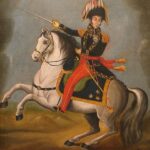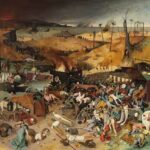![]()
French music at around 1300 became known
as ars nova musicae – the art of the new music
The wheel of history turned rather quickly from the thirteenth to the fourteenth century. Several major events turned the fourteenth century into a more cynical era. Life itself, cheapened by the slaughter and political upheaval of the Hundred Years’ War, was even more uncertain thanks to the terrifying pandemic of the Black Death.
And in the daily face of death and destruction, even belief in life everlasting was badly shaken by the Babylonian Captivity and Great Schism. Both earthly and heavenly kingdoms seemed to have failed.
Art, as a reflection of life, was enormously influenced. The humanism so hailed as a Renaissance institution began as a seedling of lost faith during the fourteenth century. As hallowed institutions faltered and failed, artists and musicians began to ignore the old rules or create new ones. This time artists were looking earthward as well as heavenward.
Two treatises, put out at almost the same time, put some of the musical changes that had already been occurring into words. One was Philippe de Vitry’s Ars Nova (The New Art) from about 1322. The other was Ars novae musicae (The Art of the New Music) by Jean de Muris from about 1321. Because of the similarity of their titles and contents, French music of the 1300s became known as Ars Nova.
Jean de Muris played it safe in his treatise by outlining why rhythms in threes should be called “perfect.” Then he outlined a way to make those perfect rhythms imperfect, or duple. Philippe de Vitry came up with the first real time signatures, which included both duple and triple rhythms as equals. His method was known as mensuration.







